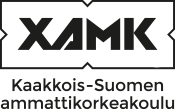Preclinical training 1 (5 cr)
Code: HT00DT92-3011
General information
Enrollment
12.04.2021 - 25.04.2021
Timing
30.08.2021 - 20.05.2022
Number of ECTS credits allocated
5 op
Mode of delivery
Contact teaching
Campus
Kotka Campus
Teaching languages
- Finnish
Seats
10 - 40
Degree programmes
- Degree Programme in Nursing
Teachers
- Jussi Mähönen
- Terhi Hede
- Riitta Tenkanen-Salmela
- Katri Rissanen
- Sari Virkki
- Mari Penttilä
- Leena Kosunen
- Satu Sällilä
- Johanna Koskenniemi
Teacher in charge
Leena Kosunen
Groups
-
SHKT21KPNursing, full-time studies
Objective
Preclinical training 5 cr and Clinical training 25 cr
You can utilize evidence-based information in different operational environments of the nursing process.
You master the key treatments and diagnostic examinations in clinical nursing as part of the patient’s total care.
You are able to apply your knowledge of nursing different patient groups (patients with internal diseases, surgical patients, gerontology patients, patients of substance abuse or mental health).
You understand the special features of treatment paths and nursing of the above-mentioned patient groups.
You master the evaluation of nursing need, nursing methods and the nursing assessment of the above-mentioned patient groups.
You know how to assess the need for urgent care of a patient.
You can systematically evaluate the need for care and act in situations that require urgent care.
You understand the duties and responsibility of a nurse in nursing the above-mentioned patients.
You know the principles of nursing promoting rehabilitation and can act accordingly.
You can choose a safe way to assist and the right tools accorind to the patient’s ability to function.
You can activate and motivate a patient to utilize his/her own resources in moving.
Content
Nursing in medical wards:
How do you utilize evidence-based information in nursing in medical wards?
What are the most common methods, procedures and diagnostic examinations in nursing in medical wards?
How do you plan, carry out and evaluate the safe medicinal and non-medicinal nursing of patients with internal diseases?
What are the special features of nursing in medical wards?
How do you carry ou tnursing that promotes rehabilitation and choose a safe way to assist and the tools?
How do you activate and motivate a patient to utilize his/her own resources in moving?
Gerontology nursing:
How do utilize the evidence-based information in gerontology and palliative nursing?
How do you plan, carry out and evaluate the safe medicinal and non-medicinal nursing of an elderly patient?
What are the special features of gerontology nursing?
What are the special features of nursing a patient with a memory disorder?
How do you evaluate the nursing need of an urgent patient?
How do you carry out nursing that promotes rehabilitation and choose a safe way to assist and the tools?
How do you activate and motivate a patient to utilize his/her resources in moving?
Nursing in mental health, substance abuse care and acute crisis:
How do you utilize evidence-based information in mental health, substance abuse and acute crisis nursing?
How do you plan, carry out and evaluate the safe medicinal and non-medicinal nursing of a mental health and substance abuse patient?
What are the special features of nursing in mental health, substance abuse and acute crisis?
How do you form an interactive nursing relationship with a mental health and substance abuse patient?
How do you carry out nursing that promotes rehabilitation?
Surgical and perioperative nursing:
How do you utilize the evidence-based information in surgical and periopeartive nursing?
What are the most common ways to assist a patient in surgical and perioperative nursing?
How do you evaluate, plan and carry out the medicinal and non-medicinal pain management of a surgical patient?
How do you evaluate, plan and carry out the medicinal and non-medicinal pain management of a perioperative patient?
How do you carry out the safe nursing of a surgical and perioperative patient at the pre-, intra-, and postoperative stages?
How do you prevent, recognize and treat complications in surgical and perioperative nursing?
Materials
KIRPE: Instructions can be found in the course Surgical and perioperative nursing learn.
Teaching methods
Exercises are mandatory!
surgical and perioperative nursing, laboratories 2ect, additional information katri.rissanen@xamk.fi
Employer connections
KIRPE: Visit to the operating room and online alumni help.
Exam schedules
KIRPE: Nationwide assessment of competence after exercises.
International connections
KIRPE: -
Student workload
KIRPE: 2x 27h (Participation in full-time study according to the study schedule and preparation for exercises)
Content scheduling
SURGICAL AND PERIOPERATIVE NURSING, laboration at school 2ect
-Planning and implementation of preoperative care
-Intraoperative nursing
--- Preparations for anesthesia
---medication
--- monitoring and treatment during anesthesia
--- patient safety and theater preparation
--- disinfection of the operating area and work in a sterile area
--- infection control
-Postoperative nursing
--- Patient-safe transfer to recovery room
--- Prevention of complications st recovery room and ward (and prevention, identification and treatment of complications)
--- Wound care, pain treatment, nausea treatment
--- follow-up care
Further information
-Be on TIME!
-Exercises are mandatory!
-In the exercises we work in work clothes!
-Participation in the exercises requires simultaneous study of the theoretical studies in question or they have already been completed.
For more information, contact the teacher in charge of each topic.
Evaluation scale
Approved/Failed
Assessment methods and criteria
KIRPE:
-Active participation in exercises and successfully completed competence assessment (s).
-Assessment of competence is approved when the patient receives high-quality evidence-based nursing care and patient or occupational safety is not endangered.
Qualifications
Professional basics in nursing and Clinical nursing I
